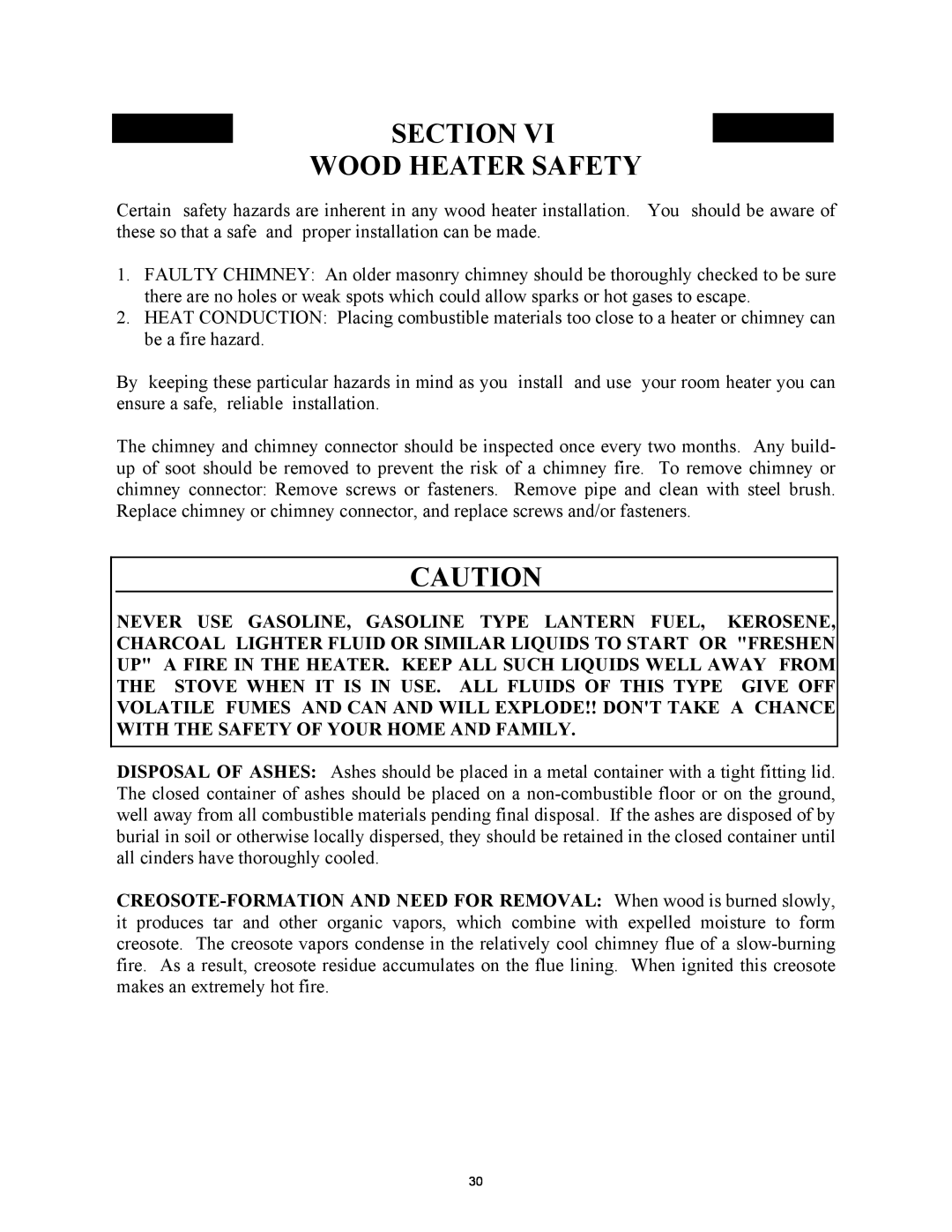
SECTION VI
WOOD HEATER SAFETY
Certain safety hazards are inherent in any wood heater installation. You should be aware of these so that a safe and proper installation can be made.
1.FAULTY CHIMNEY: An older masonry chimney should be thoroughly checked to be sure there are no holes or weak spots which could allow sparks or hot gases to escape.
2.HEAT CONDUCTION: Placing combustible materials too close to a heater or chimney can be a fire hazard.
By keeping these particular hazards in mind as you install and use your room heater you can ensure a safe, reliable installation.
The chimney and chimney connector should be inspected once every two months. Any build- up of soot should be removed to prevent the risk of a chimney fire. To remove chimney or chimney connector: Remove screws or fasteners. Remove pipe and clean with steel brush. Replace chimney or chimney connector, and replace screws and/or fasteners.
DISPOSAL OF ASHES: Ashes should be placed in a metal container with a tight fitting lid. The closed container of ashes should be placed on a
30
